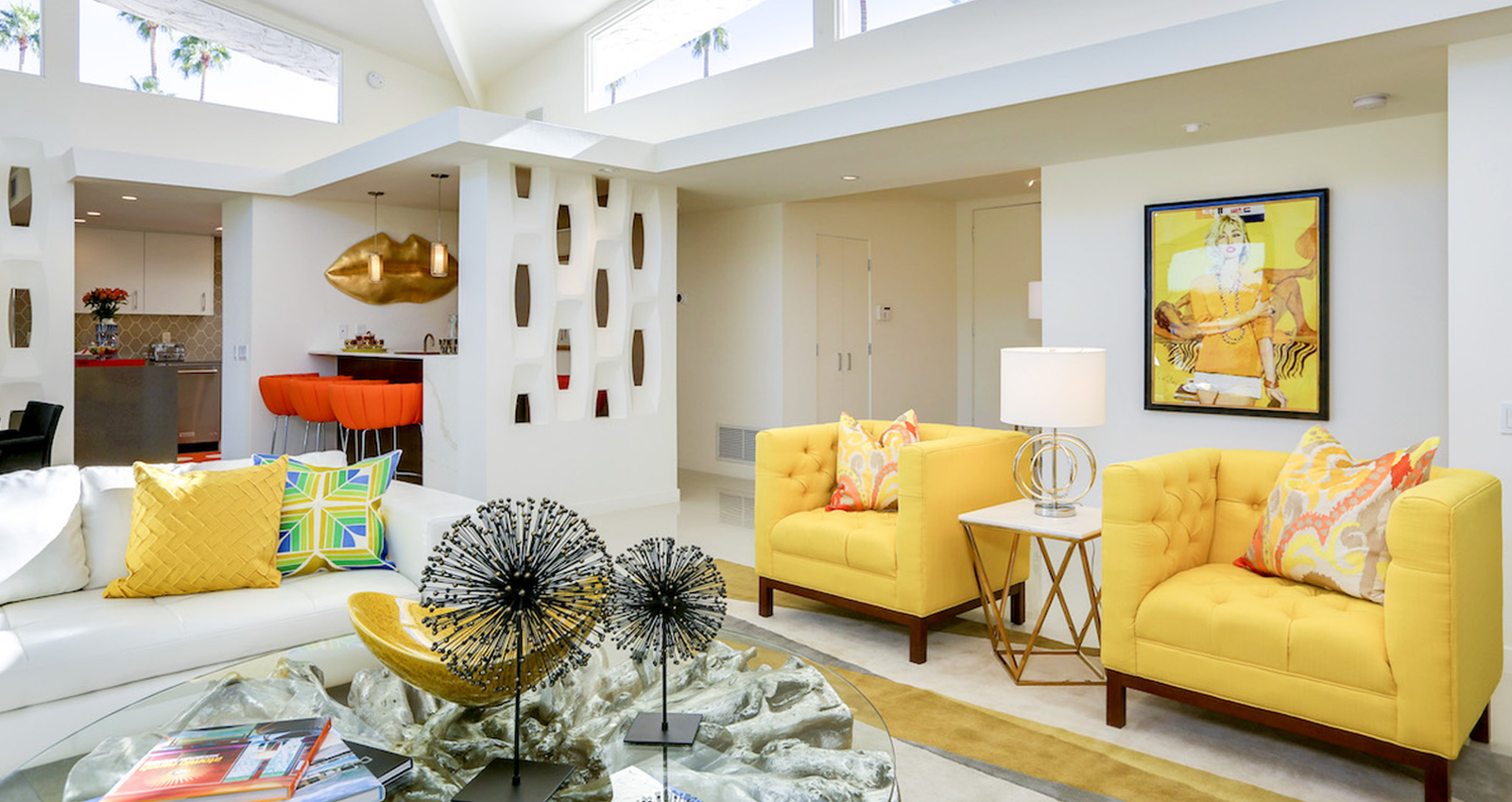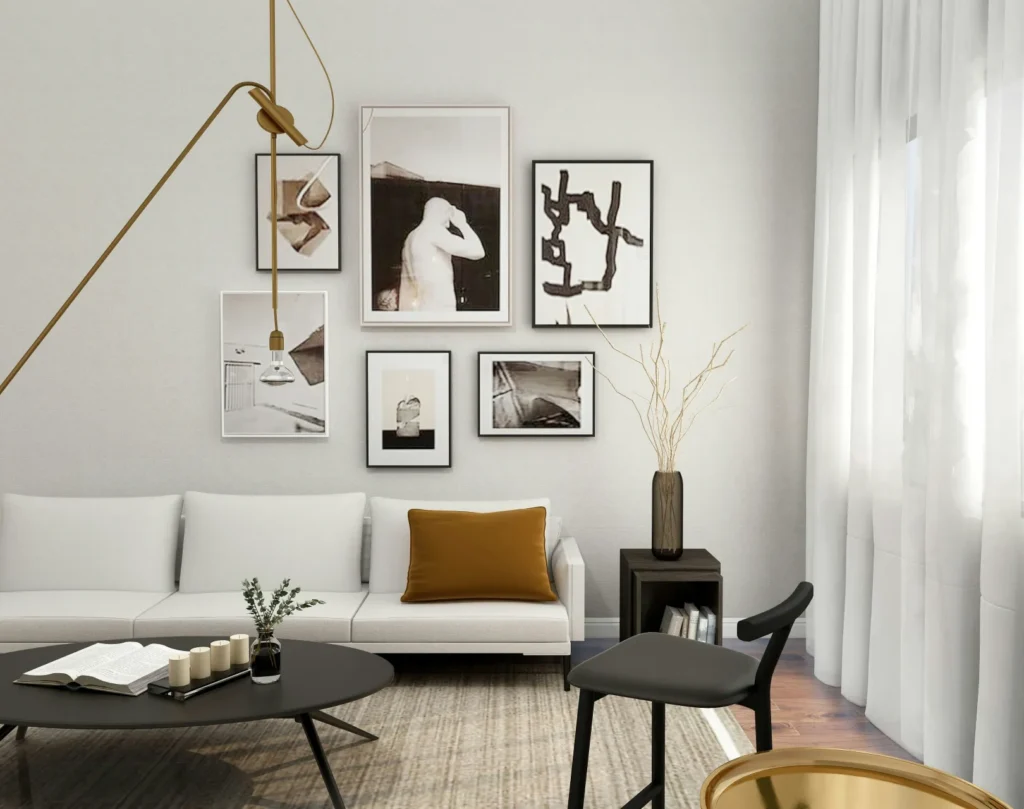1. Adopt a Color Scheme that is Minimalist. Modern design is built on a sophisticated color scheme. Neutral tones: Black, white, gray, and beiges create a soothing foundation that lets accent pieces take center stage. Accent colors: To add individuality, use striking accents like burnt orange, emerald green, or blue sparingly. Monochrome & contrast: For …
1. Adopt a Color Scheme that is Minimalist.
Modern design is built on a sophisticated color scheme.
Neutral tones: Black, white, gray, and beiges create a soothing foundation that lets accent pieces take center stage.
Accent colors: To add individuality, use striking accents like burnt orange, emerald green, or blue sparingly.
Monochrome & contrast: For a sleek, high-contrast style, combine black and white or layer tones within a color family.
2. Opt for Functional, Open Layouts.
Open, airy areas that flow naturally are preferred in modern design.
Open floor plans: To create a large, unified space, connect your kitchen, dining, and living areas.
Defined zones: To create distinct zones within open areas, use floating furniture arrangements, room dividers, or area rugs.
Multipurpose spaces: Without adding walls or visual clutter, create spaces that may be used for a variety of purposes, such as a living room area where people can work from home.
3. Make a Statement with High-Quality Furniture.
Comfort, high-quality materials, and clean lines are the hallmarks of modern furniture.
Simple silhouettes: For a classic look, select furniture with simple shapes and clear lines.
Natural materials: sturdy, fashionable options that add warmth and texture include leather, metal, and wood.
Statement pieces: To create a focal point in the space, choose an eye-catching coffee table, sofa, or light fixture.
4. Incorporate Textures and Natural Elements.
Natural materials provide warmth and soften the crisp lines of contemporary interior design.
Wood accents: Warmth and a Scandinavian flair are added by light wood tones like walnut.
Stone and concrete: A modern area might benefit from the rough, industrial edge that concrete walls or flooring provide.
Textured fabrics: Soft materials like velvet, wool, or linen give modern rooms a cozy feel, especially when used for pillows, throws, and accent chairs.
5. Establish a Smooth Indoor-Outdoor Transition.
Outdoor views and natural light are embraced in modern design.
Large windows: Unhindered views of the outside are provided by floor-to-ceiling windows, which also optimize light.
Sliding glass doors: To make the distinction between interior and outdoor spaces less obvious, install sliding or folding glass doors.
Outdoor-inspired décor: To create an outdoor atmosphere, use stone accents, natural wood furniture, or indoor plants.

6. Use Lighting Layers to Add Depth.
Layered lighting enhances the ambiance and functionality of modern dwellings.
Recessed lighting: For a sleek, unobtrusive appearance, use recessed lighting positioned on the ceiling.
Statement lighting: As creative focal points, use pendant lights, chandeliers, or contemporary wall sconces.
Accent lighting: To create an atmosphere and draw attention to particular locations, add floor lamps, table lamps, or under-cabinet lights.
7. Select Integrated Storage Options.
Hidden storage is essential because clutter is a major no-no in modern design.
Built-In shelving: In living rooms or home offices, construct unique shelves for books, décor, and commonplace goods.
Floating cabinets: To add stylish storage and conserve floor space, use wall-mounted cabinets in living areas, kitchens, and bathrooms.
Closet systems: To keep bedrooms organized, spend money on modular closet systems that have specific areas for clothes, shoes, and accessories.
8. Carefully Include Art and Décor.
Choose a few striking pieces of décor since in contemporary spaces, less is more.
Oversized art: To establish a focal point without being overly crowded, use a large abstract or minimalist artwork.
Sculptural items: Use organic-shaped candlesticks, ceramics, or vases to create visual interest.
Personal touches: Select statements or meaningful décor elements that express your individuality without overpowering the room.
9. Improve Functionality using Technology.
Modern interiors’ sleek, practical design complements smart home technology.
Installing dimmable smart lights that can be controlled by voice commands or a phone is part of smart lighting systems.
Home automation: For increased efficiency and convenience, incorporate automated security systems, thermostats, or blinds.
Hidden tech: To keep things looking clutter-free, hide cords and electronics in built-in storage or dedicated tech-friendly furniture.
10. Adopt the “Less is More” Philosophy.
Modern design is fundamentally about quality over quantity and simplicity.
Declutter frequently: Avoid over accessorizing and maintain spotless surfaces. Select only useful or significant items.
Prioritize quality over quantity: Invest in a few high-quality objects instead of filling the area with many smaller, lesser-quality pieces.
Mindful styling: To maintain a curated and understated appearance, organize items by color and texture or adhere to the rule of thirds when adorning shelves or surfaces.
Conclusion: modern interior design aims to create a room that is airy, practical, and fashionable. Clean lines, high-quality materials, and well-considered décor are key to creating a classic style that is all your own. Make your house a contemporary haven that strikes a balance between elegance and simplicity by using these suggestions.







